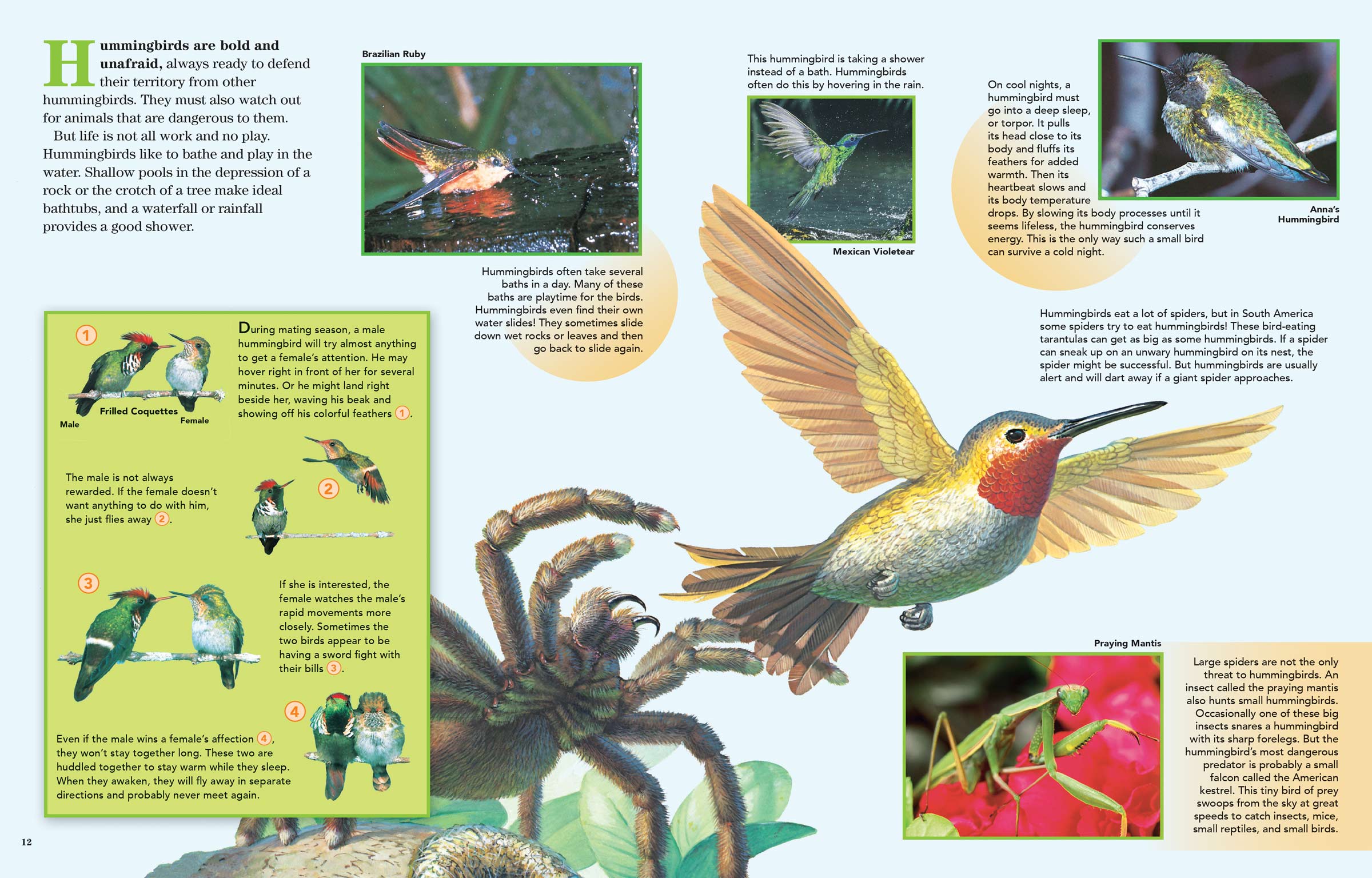
Bold and Unafraid
ByHummingbirds are bold and unafraid, always ready to defend their territory from other hummingbirds. They must also watch out for animals that are dangerous to them.
But life is not all work and no play. Hummingbirds like to bathe and play in the water. Shallow pools in the depression of a rock or the crotch of a tree make ideal bathtubs, and a waterfall or rainfall provides a good shower.
Hummingbirds often take several baths in a day. Many of these baths are playtime for the birds. Hummingbirds even find their own water slides! They sometimes slide down wet rocks or leaves and then go back to slide again.
During mating season, a male hummingbird will try almost anything to get a female’s attention. He may hover right in front of her for several minutes. Or he might land right beside her, waving his beak and showing off his colorful feathers.
The male is not always rewarded. If the female doesn’t want anything to do with him, she just flies away.
If she is interested, the female watches the male’s rapid movements more closely. Sometimes the two birds appear to be having a sword fight with their bills.
Even if the male wins a female’s affection, they won’t stay together long. These two are huddled together to stay warm while they sleep. When they awaken, they will fly away in separate directions and probably never meet again.
This hummingbird is taking a shower instead of a bath. Hummingbirds often do this by hovering in the rain.
On cool nights, a hummingbird must go into a deep sleep, or torpor. It pulls its head close to its body and fluffs its feathers for added warmth. Then its heartbeat slows and its body temperature drops. By slowing its body processes until it seems lifeless, the hummingbird conserves energy. This is the only way such a small bird can survive a cold night.
Hummingbirds eat a lot of spiders, but in South America some spiders try to eat hummingbirds! These bird-eating tarantulas can get as big as some hummingbirds. If a spider can sneak up on an unwary hummingbird on its nest, the spider might be successful. But hummingbirds are usually alert and will dart away if a giant spider approaches.
 Large spiders are not the only threat to hummingbirds. An insect called the praying mantis also hunts small hummingbirds. Occasionally one of these big insects snares a hummingbird with its sharp forelegs. But the hummingbird’s most dangerous predator is probably a small falcon called the American kestrel. This tiny bird of prey swoops from the sky at great speeds to catch insects, mice, small reptiles, and small birds.
Large spiders are not the only threat to hummingbirds. An insect called the praying mantis also hunts small hummingbirds. Occasionally one of these big insects snares a hummingbird with its sharp forelegs. But the hummingbird’s most dangerous predator is probably a small falcon called the American kestrel. This tiny bird of prey swoops from the sky at great speeds to catch insects, mice, small reptiles, and small birds.

